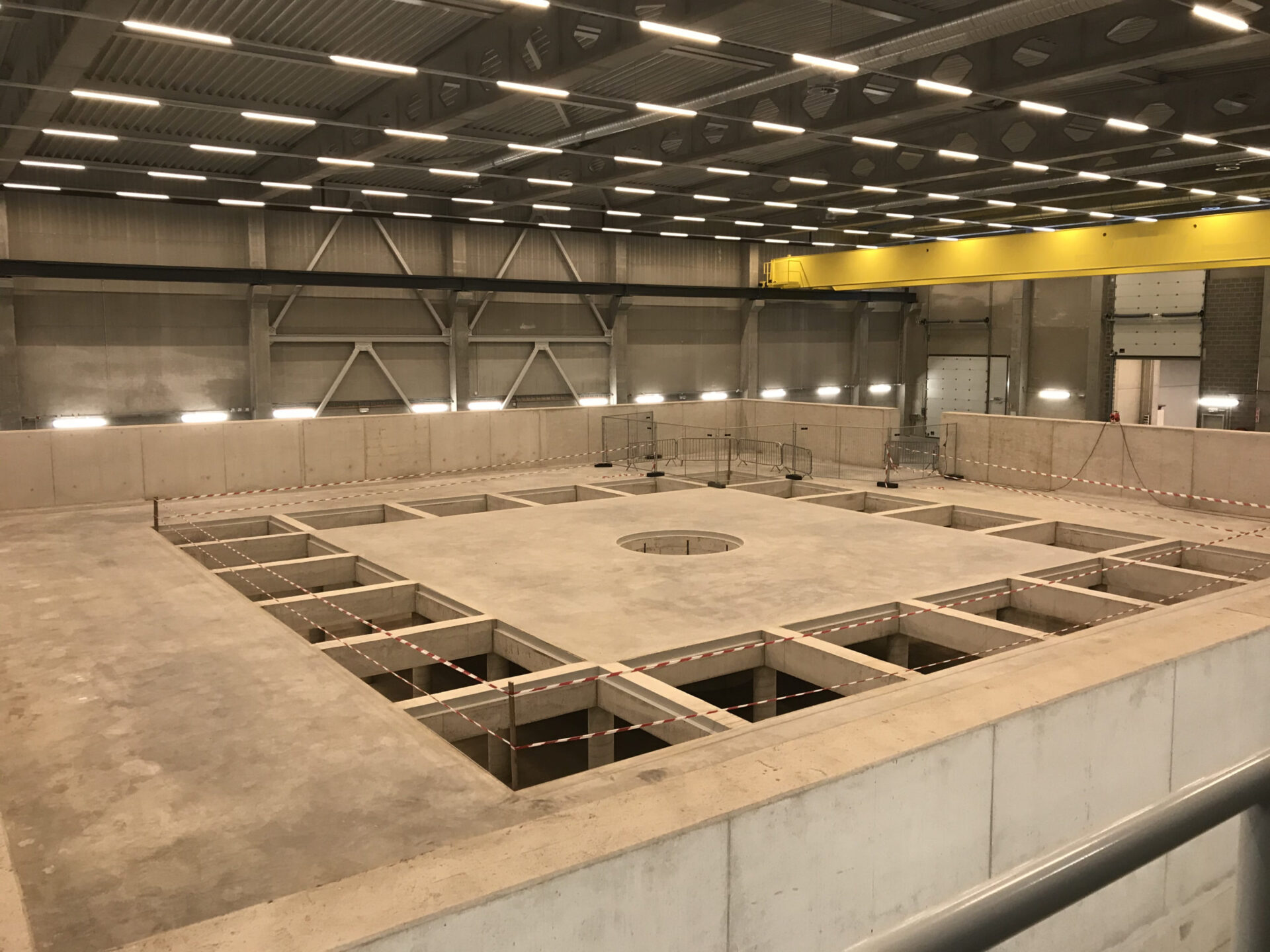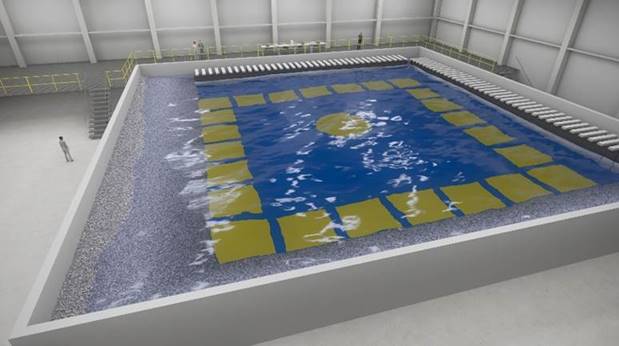On February 27th 2017, the construction of a new maritime laboratory, called the Flanders Maritime Laboratory, started in Ostend.
This maritime laboratory integrates two facilities, a towing tank and a wave basin. Ghent University, the Catholic University of Leuven and Flanders Hydraulics Research will use the wave basin, the Coastal and Ocean Basin (COB) to study the impact of waves, tides and wind on ships and coastal and offshore structures. Ghent University and Flanders Hydraulics Research will use the towing tank to study ship maneuvering in shallow water conditions.
About the new Flanders Maritime Laboratory
Along with the two universities, Flanders invests 28 million euro in the new Flanders Maritime Laboratory that is planned to be operational in 2020.
“The Flemish harbours, that serve as a gateway to Europe and process an important part of the European import and export, are the motor of our economy and welfare. Ensuring their accessibility for ships that are increasing in size, is crucial to our economic position and the preservation of prosperity,” states Minister Ben Weyts. “This new maritime laboratory offers plenty of possibilities for windmill manufacturers, offshore engineering and developers of wave and tidal energy. The research that will be conducted in the laboratory will help to reduce the risks of building at sea and it will allow large and small companies to respond more quickly to market developments.”
Towing tank and wave basin
At Flanders Hydraulics Research in Antwerp, the accessibility of the Flemish sea harbours is studied by using ship maneuvering simulators. The towing tank at Flanders Hydraulics Research, supporting these studies, dates from 1992 and was built to test ships up to 200 meters in length. Today, there are ships up to 400 meters in length that pass through our harbours, so the scale models used in these experiments increase as well, requiring a larger towing tank. The new towing tank is 174 meters long, 20 meters wide and the water depth is 1 meter. This allows for maneuvering tests with scale models up to 8 meters in length, twice as long as the current installation in Antwerp, making the test results a lot more accurate.
The “Coastal and Ocean wave Basin”, is a large concrete structure filled with water (30 m x 30 m x 1,4 m deep) in which waves, currents and wind can be generated in a controlled manner. Scale models of offshore structures, structures for coastal protection, floating wind turbines, wave energy converters,… are placed in this wave basin and their design and performance under the influence of waves, currents and wind is studied. The first experiments are planned to start in 2020.
Role of the new infrastructure
This new maritime research centre will join the Flemish maritime expertise and strengthen and support the operation of the Belgian ports and shipping.
Most importantly, both facilities will strengthen the international research position of Flanders in the fields of coastal, offshore and maritime engineering. Moreover, the infrastructure provides the opportunity for companies and governmental institutions and agencies to develop innovative designs for coastal protection and offshore energy. This new infrastructure will therefore be an important tool for the academic partners (Ghent University and KULeuven), for the Flemish Government (the Flanders Hydraulics Research) as well as for the Flemish industry players who are active in the wider “blue growth” sector, the sector of marine-related activities.


